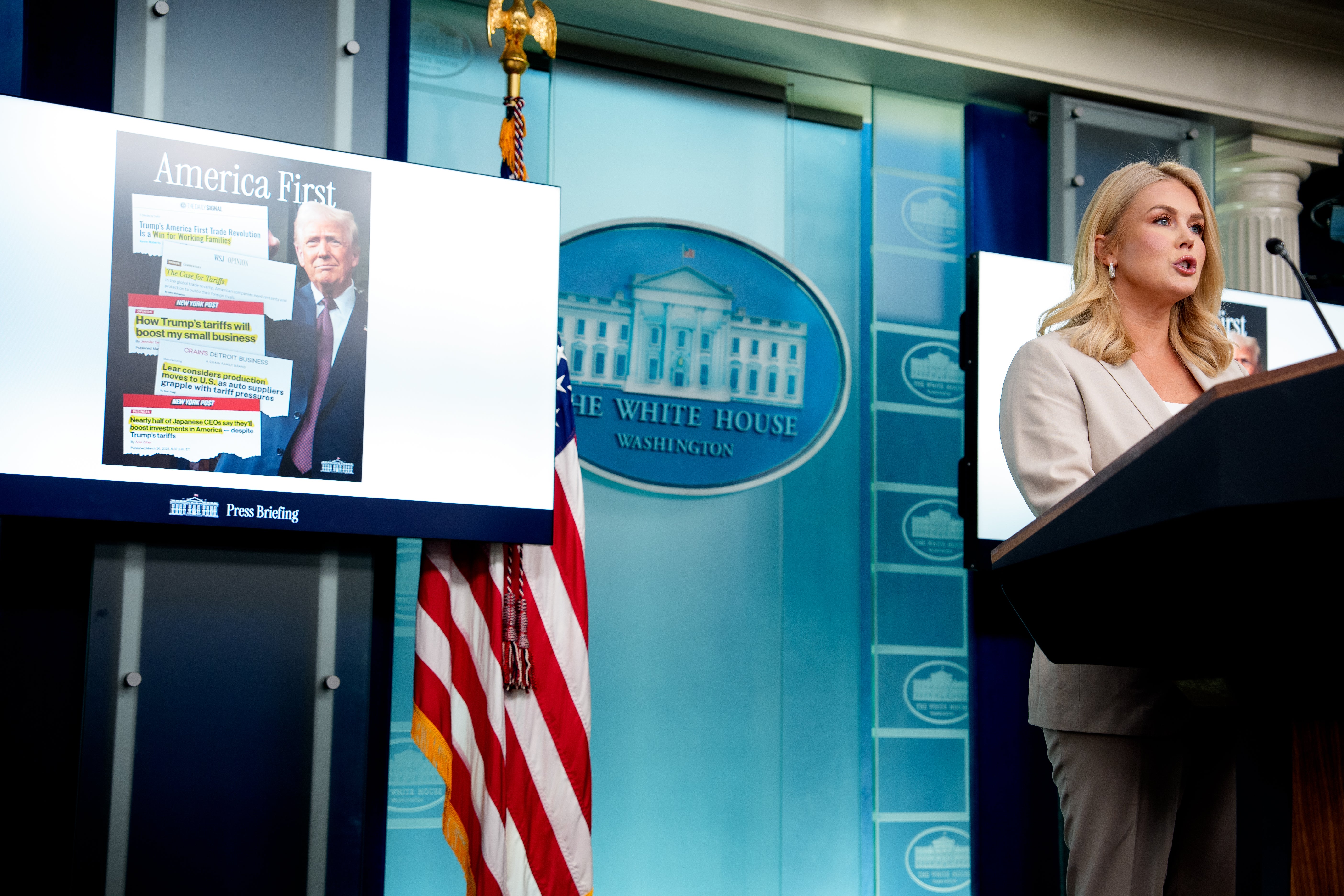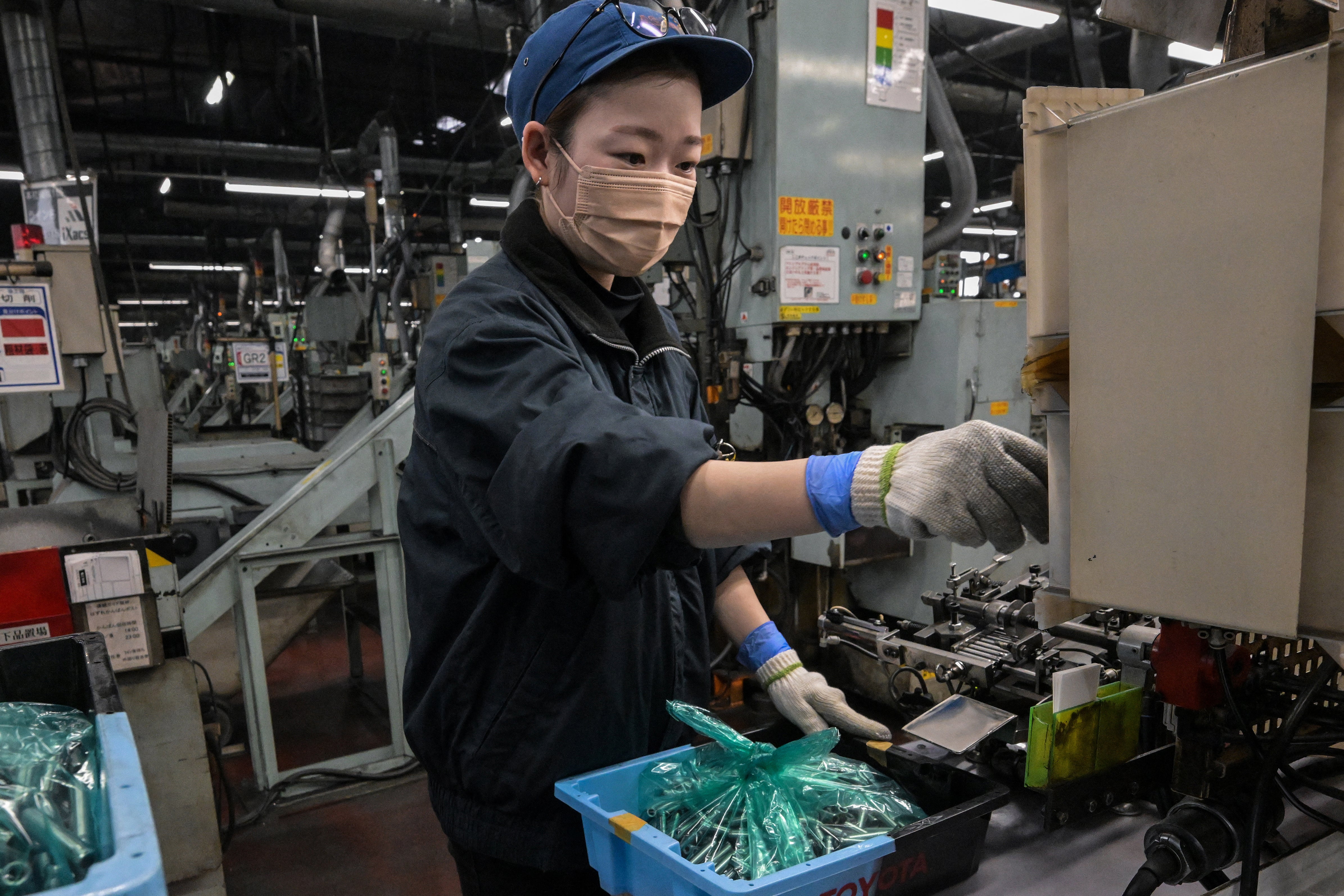Trump finally unveiled his long-awaited tariff plan. Here’s what happened on ‘Liberation Day’
Economists fear the president’s escalating trade war could have a damaging ripple effect that drives up prices
Donald Trump hailed “liberation day in America” after slapping a 10 percent tax on all imported goods and additional “reciprocal” tariffs against several key trading partners in his escalating trade war that is expected to have a damaging economic ripple effect.
It still remains unclear how new trade barriers will impact the economy and costs of everyday goods as Americans grapple with an uneasy market and a looming affordability crisis.

Administration critics and most economists have repeatedly warned that sweeping tariffs amount to a tax on Americans, as importers and retailers are expected to hike prices to compensate for the levies they face.
How will Trump’s tariff plan work?
By executive order, the president is imposing a 10 percent tariff on all imported goods — including U.S. allies like the U.K. — with double-digit “reciprocal” tariffs on foreign trading parters that his administration has accused of unfair trade practices.
That means American importers will be responsible for a 34 percent tax for all Chinese imports and 20 percent on all imports from European Union countries. The administration will also impose a 32 percent tariff on imports from Vietnam and a 24 percent tariff on imports from Japan — what White House officials say is based on a formula that bases the tax rates on America’s trade deficits.
The United States has been “looted, pillaged, raped and plundered by nations near and far and friend and foe alike” and “foreign cheaters have ransacked our factories,” the president said from remarks in the White House Rose Garden on April 2.
“Foreign nations” will “finally be asked to pay for the privilege of access to our market, the biggest market in the world,” Trump said.
“If you want your tariff rate to be zero, then you build your product right here in America,” he added. “Terminate your own tariffs, drop your barriers, don’t manipulate your currencies … and start buying tens of billions of American goods.”
Why is Trump using tariffs?
Trump has called the word “tariff” the “the most beautiful word in the dictionary.” The president and administration officials argue a flood of imports has threatened American industries, and that a tax on those products would incentivize companies to open factories and other manufacturing hubs in the United States to avoid paying them.
“They’re about protecting the soul of our country,” the president said in his remarks to Congress last month. “Tariffs are about making America rich again and making America great again.”
Most economists agree Trump is relying on an outdated — and self-defeating — nationalist economic perspective. Trump even conceded that there will be “a little disturbance” in the economy, but “we’re OK with that” because “it won’t be much,” he said in his speech to Congress.
Trump and officials have repeatedly claimed that tariffs on imported goods will result in lower prices for Americans. When a reporter with the Associated Press asked White House press secretary Karoline Leavitt about Trump’s tariff plan last month, she falsely claimed “tariffs are a tax cut for the American people.”

“I’m sorry, have you ever paid a tariff? Because I have. They don’t get charged on foreign companies. They get charged on the importers,” the reporter responded.
Leavitt called his question “insulting.”
“When we have fair and balanced trade, which the American people have not seen in decades, as I said at the beginning, revenues will stay here, wages will go up and our country will be made wealthy again,” she said.
Pressed this week on whether tariffs are the right move, Leavitt said: “They’re not going to be wrong ... It is going to work.”
Hours before Trump’s announcement, with scant details available, Small Business Administration chief Kelly Loeffler told Fox Business that “liberation day” is “the single greatest salvation, for not just small businesses, but for America.”
Trump’s retaliatory tariff scheme amounts to a “reckless escalation that will undermine U.S. national interests, alienate allies, and deepen economic insecurity for American workers, consumers, and small businesses,” according to Robert Weissman, co-president of Public Citizen, which has joined several legal challenges against the administration.
“For decades, corporate-rigged trade deals have offshored jobs, stagnated wages, and put investor profits over public interests, but these tariffs are not about reversing that damage,” he added. “They’re about weaponizing trade policy to advance the narrow interests of fossil fuel giants, Big Tech companies, and Trump’s billionaire cronies — while distracting from the administration’s utter failure to deliver a coherent, worker-centered trade agenda.”
What countries and products are expected to be impacted?
Virtually all of them. Trump’s tariffs will apply to all goods imported from more than 100 trading partners, including the European Union, U.K., China and India.
Chinese imports will face a 34 percent “reciprocal” tariff in addition to a pre-existing 20 percent tariff imposed earlier this year, for a total of 54 percent, and possibly more with additional industry-specific tariffs.
The countries hit hardest by Trump's tariffs
- China: 54 percent
- Lesotho: 50 percent
- Cambodia: 49 percent
- Madagascar: 47 percent
- Vietnam: 46 percent
- Sri Lanka: 44 percent
- Mauritius: 40 percent
- Botswana: 38 percent
- Bangladesh: 37 percent
- Thailand: 36 percent
- Taiwan: 32 percent
African and southeast Asian nations and some of the world’s weakest economies are among the hardest hit, compounding the effects of the Trump administration’s cuts to U.S. aid in many of those countries.
The United States is the world’s largest importer, and Americans rely on more than $3 trillion of imported goods and services each year. Sweeping tariffs against America’s largest trading partners are expected to significantly drive up the costs of oil and gas, sugar, fresh fruits and vegetables, clothing, construction material and automobiles and auto parts, The Independent has reported.
Since taking office, Trump has repeatedly threatened tariffs on a range of goods, only to postpone them indefinitely or call them off after reaching deals with targeted nations.
Trump’s tariff threats have specifically targeted goods from Canada, China and Mexico, claiming that officials there are not adequately combating illegal immigration or movement of fentanyl into the United States. Trump has already imposed 25 percent tariffs on Canada and Mexico, though they have been paused twice.
Canada and Mexico are exempt from the 10 percent baseline tariff, due to the U.S.-Mexico-Canada Agreement (USMCA) but remain subject to new duties applied earlier this year.
Cuba, Belarus, North Korea and Russia were also not subjected to new tariffs, either because of existing sanctions or existing high tariffs.

Trump has also previously floated massive tariffs on European alcohol. A 25 percent tariff on all imports from countries that buy oil or gas from Venezuela is set to take effect this month.
Trump backed off 25 percent tariffs on Colombian goods after the country agreed to receive deportation flights from the United States, and he withdrew a plan for a 25 percent surcharge on electricity exports from Ontario after Canada agreed to suspend its charges.
The president said he is imposing a 25 percent tariff on foreign-made automobiles and parts, even if they’re assembled domestically.
Imports under USMCA “will be given the opportunity to certify their U.S. content” and a 25 percent tariff “will only apply to the value of their non-U.S. content,” according to the White House.
“I hope they raise their prices because if they do, people are gonna buy American-made cars,” Trump told NBC News of foreign automakers. “I couldn’t care less because if the prices on foreign cars go up, they’re going to buy American cars.”
So are prices going up?
Most likely.
Americans could see higher costs for some goods — like perishable foods — faster than others. More than half of the country’s fresh fruit and nearly three-quarters of its vegetables came from Mexico in 2022, according to the Department of Agriculture.
The United States imports more cars and car parts from Mexico than any other country, accounting for roughly 27 percent of all auto imports.

“For auto dealers and their customers, already reeling from rising vehicle and parts prices, as well as high interest rates and insurance costs, these new tariffs pose an additional and unwelcome challenge to affordability,” according to American International Automobile Dealers Association president Cody Lusk.
Even the already-growing costs of a simple screw have impacted supply chains for American companies that make everything from “car parts to appliances and football helmets to lawn mowers,” according to The Wall Street Journal.
Will this cause a recession?
It might.
“Recession indicator” memes aside, a number of key markers are starting to sound alarms.
Uneasy markets have been on a rollercoaster ahead of Trump’s “liberation day” announcement, with Wall Street analysts fearing the risks of a recession around the corner. Higher consumer costs risk business slowdowns as Americans pad their savings to endure a potential economic downtown.
Tariffs from both directions in the trade war — including those imposed by Trump and retaliatory measures coming from the nation’s trading partners — have rattled consumer confidence. Wall Street firms are reducing estimates for the expansion of gross domestic product, and the Federal Reserve’s favorite recession-forecasting tool is showing negative signs.
“If both businesses and consumers start to worry and pull back their spending, that is what can tip the U.S. over into a recession,” American University economist Kara Reynolds told ABC News.
Labor economist Kathryn Anne Edwards says a potential recession under the Trump administration would be “self-inflicted.”
Recessions happen — the country has endured more than a dozen over the last century — but the next one would “arguably be the only recession directly caused by White House policy,” she wrote in Bloomberg.
Join our commenting forum
Join thought-provoking conversations, follow other Independent readers and see their replies
Comments